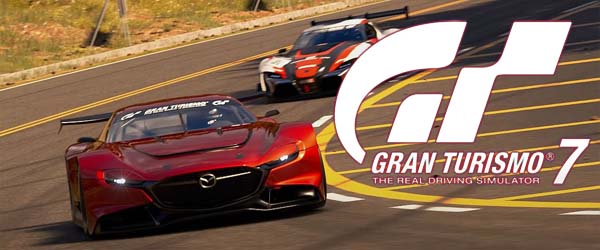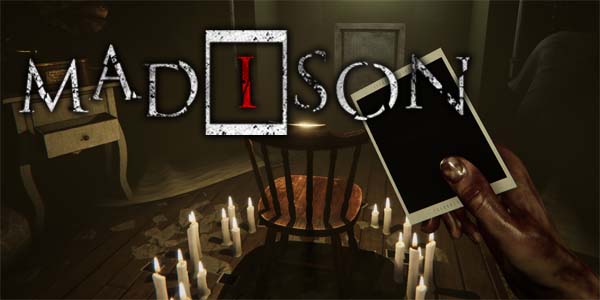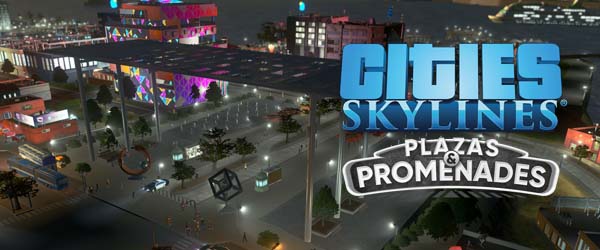
Back in June, I had posted a video and blog blasting Gran Turismo 7's campaign mode and progression systems. I said that Gran Turismo 7 represents an extreme example of all the things that made me stop playing Gran Turismo years ago.
None of that has changed. Polyphony finally added the ability to sell unwanted or duplicate cars, and there's a handful of extra bonus menu collections for the players to pursue after completing the main campaign. The actual campaign, however, and its underlying reward and progression systems remain unchanged from when I complained about them in the summer.
But I had also mentioned in my review and critique, that the actual racing in Gran Turismo 7 is amazing. I thought that I would quickly lose interest in Gran Turismo 7 after I published my review and that critique video back in June, and that I would never pick up the game after that unless there was some massive update or campaign DLC.
This entire essay was released early to my Patrons in the form of a YouTube video.
Much to my surprise, that ended up not being the case. I actually kept coming back to Gran Turismo 7 for months, and am still playing it off and on. I finished the main campaign, started doing some of the special events and track experience trials, and have even done some of the bonus menus and new events that have been added to the game since its launch. Even now, I still occasionally start jonesing to get behind the wheel for another race, even though I'm way out of practice, and often need a few practice races to refresh my motor memory. And there's still a piece of me that wants to try the online multiplayer...
So if you are one of the many who is disappointed by Gran Turismo 7, and the lackluster effort that Polyphony has made to update and maintain the game, I would say that you have every right to be disappointed. 7 is a far cry from the glory days of Gran Turismo 3. But before you give up on the game entirely, I urge you to try the this one little thing before you drop the game entirely: try steering with the motion controls!
[More]
I recently wrote about how much my partner and I are enjoying our Kia Sorento plug-in hybrid, despite its handful of nitpicky complaints. The car has proven to be quite efficient for how we use it, especially once we got the level 2 charger installed in our garage, and can get a useable re-charge in between trips during the day. We even managed to drive over a thousand miles on a single tank of gas!
Unfortunately, that thousand mile tank of gas has not been able to repeat itself quite yet because it turns out that the Sorento might not be the most efficient cold-weather PHEV on the market. The reason for this is that all the heating for the cabin of the car is reliant on the gas engine. The car is not equipped with a heat pump (which is usually standard on EVs) and has no electric heating at all. If you are running the cabin heater, or the heated seats, the gasoline engine will engage, regardless of how much battery range is remaining, or what your selected drive mode is.
Kia Sorento heater runs exclusively off the gas engine.
This was not something that my partner and I had even bothered to research or consider when deciding which car to purchase. However, it's unlikely to have been a deal-breaker for us, personally. The reason for this is that we live in Las Vegas, Nevada. We only get a few months of "winter" weather, and even those months are still [usually] not terribly cold. Daytime highs usually hover between the low 60's and mid 50's (Fahrenheit), and we go years without seeing any snow in the city.
As such, the Sorento's lack of a heat pump, and its reliance on the gas engine for heating isn't quite as problematic as it might be in Northern Nevada, or in a state like Wisconsin or Maine. If you're in the market for an EV or PHEV, and you live in a cold-weather region, you might want to consider a vehicle other than the Sorento, as you'll be losing a lot of the advantages of the electric motor and battery if you're driving in freezing weather.
[More]

I feel like Halloween just wouldn't be Halloween anymore without playing some new P.T.-inspired indie horror game. This year's "hot" title seemed to be MADiSON by Bloodious Games, which I started playing with a group of 2 friends on Halloween night (after returning from taking the kids Trick or Treating), but we didn't get around to finishing until after the New Year. It wasn't that we didn't want to keep playing. Quite the opposite, in fact. The reason it took so long to finish is because all 3 of us really wanted to keep playing, so I had to wait till all 3 of us were available for a next session before continuing.
In addition to being another indie horror game in a long line of P.T. wannabes, MADiSON also follows in closely off the coattails of Visage. Both games heavily utilize a polaroid flash camera as a critical multi-tool, but MADiSON does one-up Visage by making the camera much more integral to core gameplay. While I only remember the camera in Visage being used as a source of temporary illumination, the camera of MADiSON is both integral to the story, and also absolutely necessary for solving multiple puzzles and for progressing the game's story.
Yet another indie horror game about wandering the halls of a haunted house -- this time with a camera!
Ocular Obscura
The core gimmick of MADiSON is that the player uses a polaroid camera to take pictures of the environment, and the resulting photograph will show things that aren't really there. These photographs will be used as clues to solve a puzzle or to progress the scenario, or taking the picture will just outright trigger the next objective. The house is littered with such puzzles. Unfortunately, the layout of the house, the pacing of the scenario, and the solutions to many puzzles can be a bit on the obtuse side. So much so, in fact, that Bloodious Games resorted to scattering blank polaroids near important objects, which act as obvious signposts that you should take a picture of the thing. This isn't exactly obvious at first, because many such marked objects will get no reaction from the camera until later parts of the scenario, when they become relevant to the current task at hand.
The dense nature of the game's map creates a lot of problems for pacing and signposting. Multiple puzzles, from different chapters of the game, might be present in the same space and could serve to interfere with one another or confuse the player.
This isn't to say that the puzzles are necessarily "bad". Once we realized that the house is littered with red herrings that don't become relevant until later, I actually started to like that these puzzles are a bit more complicated and multi-layered than the typical adventure game fare the we've been getting over the past decade or so. This was, in fact, a big reason why all 3 of us wanted to continue playing the game: we wanted to solve the next puzzle! So many adventure and horror puzzles these days don't get much more complicated than "open a drawer, find a key, and use said key on the one and only lock in that same room." They can feel so patronizing. MADiSON's puzzles definitely do not feel patronizing!
Many puzzles require careful observation and inferences from the environment.
Even if there is a simple clue like a color or a number that is given to the player, there is always some confounding additional factor. It's never just as simple as matching a number or a color or a shape. Most of these puzzles require some careful observation of the player's surroundings, some contextual inferences that won't be obvious to every player, and occasionally a lit bit of arithmetic, spatial, or logic skills. Playing this game in a group actually did help in this regard. Any one of us would have been stuck for a while on multiple puzzles, but there was always one of us who would pick up on a given clue and point it out to the others.
But some of the early puzzles, in particular, are a bit heavy on the red herrings and could definitely have used some better sign-posting and direction.
[More]
49704781-82c7-44a0-b8aa-67e4cff81352|1|5.0
Tags:Madison, Bloodious Games, indie gaming, horror, psychological horror, camera, demon, possession, occult, ritual, inventory, walking simulator, PS5

Looks like we're back to seeing 2 Cities: Skylines expansions being released in the same calendar year. Airports released in January, and now in September, Plazas & Promenades hit digital storefronts. I wonder if this will continue now that most businesses (and presumably Colossal Order) are back to business as usual following the COVID pandemic? Or maybe Colossal Order is migrating towards releasing even smaller, more module micro-expansions such as the recently-released Financial Districts DLC (which I'll review later)? Or will we finally see an announcement on the rumored sequel to Cities: Skylines soon?
Based on previews, I was expecting this expansion to completely change the way that I build my cities by giving me more freedom to pack structures into compact spaces and to more seamlessly integrate parks with business districts, leisure and tourism districts, or neighborhoods. I immediately started thinking of multiple ways that I could potentially use these 2 ideas to create new city layouts and concepts. Unfortunately, I set my expectations too high, and pedestrian areas ended up not being quite as game-changing as I thought and hoped they might. The big problem is that Plazas & Promenades is just another iteration of the paintable area concept that has been the focus of almost every expansion since Parklife. Paintable areas is a good mechanic for things like parks and university campuses, but it can be extremely limiting for an application as broad as neighborhoods or entire districts.
Plazas & Promenades allows the construction of more walkable neighborhoods and districts.
Roads minus the cars
First and foremost is the simple fact that the new pedestrian roads look and act more like regular roads than like pedestrian paths. They are the same size as roads, being either 2 or 4 tiles wide, and are laid out almost exactly the same. None of these pedestrian roads are 1 tile wide. And, of course, the legacy pedestrian paths have not been updated to allow buildings to be zoned along them. The end result is that these "Pedestrian Zones" don't take up any less space, and aren't any more compact than any other district. Though, the high-density, "wall-to-wall" residential buildings do have the same capacity as the normal, high-density residential skyscrapers (20-26 households), despite being a fraction of the size. So I guess it's "more compact" vertically? More people being crammed into smaller spaces? If so, it doesn't seem to have any impact on the citizen's happiness or satisfaction ratings.
Using Pedestrian roads outside of Pedestrian Areas is a liability, since zoned buildings may build on them.
Even though pedestrian roads can be placed anywhere, buildings can only be placed or zoned along them if they are in a dedicated Pedestrian Area. So if I want to create a single walkway or alleyway and zone some homes or shops along it, I have to paint the entire area as a Pedestrian Area. Well, at least, that is the case if you want the buildings to be functional. The game actually will let the player zone and place buildings along pedestrian roads outside of pedestrian areas, but doing so will result in the building flashing a "Not in Pedestrian Zone" warning, and the building won't operate.
[More]
18d09944-68e9-4886-b7fb-12dd3b3e66a3|1|5.0
Tags:Cities: Skylines, Cities: Skylines: Plazas and Promenades, Colossal Order, Paradox Interactive, steam, PC, expansion, pedestrian, roads, plaza, promenade, park, seaside resorts, mid-century modern, beach, boardwalk
|

| 12 | | | | | | | 60 | | 11 | | | | | | | 55 | | 10 | | | | | | | 50 | | 09 | | | | | | | 45 | | 08 | | | | | | | 40 | | 07 | | | | | | | 35 | | 06 | | | | | | | 30 | | 05 | | | | | | | 25 | | 04 | | | | | | | 20 | | 03 | | | | | | | 15 | | 02 | | | | | | | 10 | | 01 | | | | | | | 05 |
|